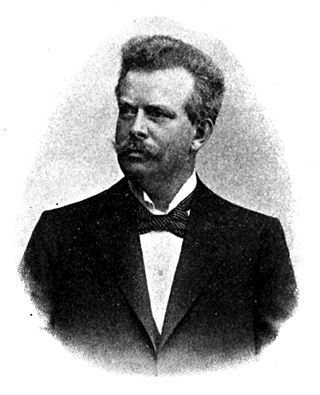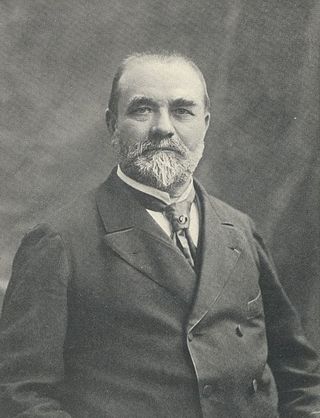Related Research Articles

An eponym is a person, a place, or a thing after whom or which someone or something is, or is believed to be, named. The adjectives which are derived from the word eponym include eponymous and eponymic.

Inguinal lymph nodes are lymph nodes in the groin. They are situated in the femoral triangle of the inguinal region. They are subdivided into two groups: the superficial inguinal lymph nodes and deep inguinal lymph nodes.

In the fetus, the ductus venosus shunts a portion of umbilical vein blood flow directly to the inferior vena cava. Thus, it allows oxygenated blood from the placenta to bypass the liver. Compared to the 50% shunting of umbilical blood through the ductus venosus found in animal experiments, the degree of shunting in the human fetus under physiological conditions is considerably less, 30% at 20 weeks, which decreases to 18% at 32 weeks, suggesting a higher priority of the fetal liver than previously realized. In conjunction with the other fetal shunts, the foramen ovale and ductus arteriosus, it plays a critical role in preferentially shunting oxygenated blood to the fetal brain. It is a part of fetal circulation.
Judith Goslin Hall is a pediatrician, clinical geneticist and dysmorphologist who is a dual citizen of the United States and Canada.
Mendelson's syndrome, named in 1946 for American obstetrician and cardiologist Curtis Lester Mendelson, is a form of chemical pneumonitis or aspiration pneumonitis caused by aspiration of stomach contents during anaesthesia in childbirth. This complication of anaesthesia led, in part, to the longstanding nil per os recommendation for women in labour.
Uveoparotitis is a symptom of sarcoidosis. It describes a chronic inflammation of the parotid gland (parotitis) and part of the eye called the uvea (uveitis). There is also a phenomenon called Waldenström's uveoparotitis, where the symptom is related to Heerfordt's syndrome. The condition was first described in 1909.
Widukind Lenz was a distinguished German pediatrician, medical geneticist and dysmorphologist who was among the first to recognize the thalidomide syndrome in 1961 and alert the world to the dangers of limb and other malformations due to the mother's exposure to this drug during pregnancy.

The straight leg raise is a test that can be performed during a physical examination, with the leg being lifted actively by the patient or passively by the clinician. If the straight leg raise is done actively by the patient it is a test of functional leg strength, particularly the rectus femoris element of the quadriceps. If carried out passively, it is used to determine whether a patient with low back pain has an underlying nerve root sensitivity, often located at L5. The rest of this article relates to the passive version of the test.

Heinrich Unverricht was a German internist who was a native of Breslau.

Charles Émile Troisier was a French surgeon.
Kocher's sign is a medical sign that denotes an eyelid phenomenon in hyperthyroidism and Basedow's disease. In fixation on a fast upwards movement there occurs a convulsive retraction of the eyelid.
Emma Louise Call (1847–1937) was an American physician, and one of the first female physicians in the United States. Along with Sigmund Exner, she is one of the namesakes of Call-Exner bodies, a pathognomonic feature of granulosa cell tumors. These tumors are associated with ovarian cancers.
Rudolf Arthur Pfeiffer was a German geneticist. He discovered Pfeiffer syndrome in 1964.
Woltman's sign is a delayed relaxation phase of an elicited deep tendon reflex, usually tested in the Achilles tendon of the patient.
Dittrichin Siegmundin was a German obstetrician named as a possible re-inventor of nooses and blunt hooks for turning or extracting an infant in difficult births. She was the first, along with Francois Mauricaeu, to apply the technique of puncturing the amniotic sac to arrest hemorrhaging in placenta praevia. During this time, she studied the correct amount of use of these tools and wrote about the importance of not overusing or abusing these tools and procedures. She studied the instruments and procedures of obstetrics from books and practice alongside peasant women for nearly 12 years. In 1689 her first book was published, and reprinted six times, for midwives reflecting on all of the notes and illustrations she kept with each delivery in her practice. She eventually became the midwife to the Court of the Elector of Brandenburg in the royal family of Prussia and one of the most celebrated of the German midwives of the 17th century.
Eijkman test, or differential coliform test, or confirmed Escherichia coli count, is a test used for the identification of coliform bacteria from warm-blooded animals based on the bacteria's ability to produce gas when grown in glucose media at 46°C (114.8°F).
Victor Assad Najjar (1914-2002) was a Lebanese-born American pediatrician and microbiologist at the Johns Hopkins Hospital, Vanderbilt University and Tufts University. Along with John Fielding Crigler, Najjar is known for Crigler–Najjar syndrome.
Peter McBride FRSE (1854–1946) was a Scottish physician and expert on the larynx. In 1897 he was first to identify the malignant granuloma of the nose known as Granuloma Syndrome or granulomatosis with polyangiitis. Edinburgh's McBride Lecture was named in his honour in 1979.
Ellen Damgaard Andersen is a physician and researcher who described Andersen Syndrome. This autosomal, dominant trait and the syndrome was described as a condition where ventricular arrhythmia, with an accompanying a variant of long QT interval, periodic paralysis and distinctive physical characteristics.
References
- 1 2 Larner, AJ (2003). "Who named it? www.whonamedit.com". Journal of Neurology, Neurosurgery, and Psychiatry. 74 (12): 1614. doi:10.1136/jnnp.74.12.1614. PMC 1757429 .
- ↑ Huber, Jeffrey T.; Swogger, Susan (2014). Introduction to Reference Sources in the Health Sciences (Sixth ed.). American Library Association. p. 196. ISBN 978-0-8389-1184-6.